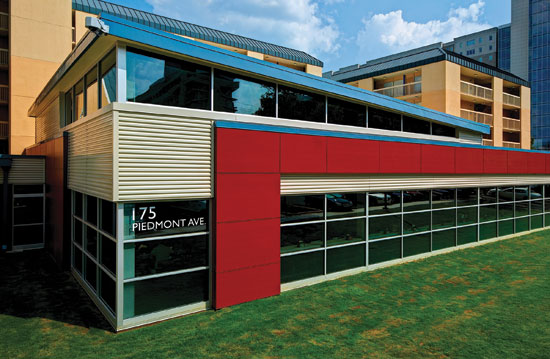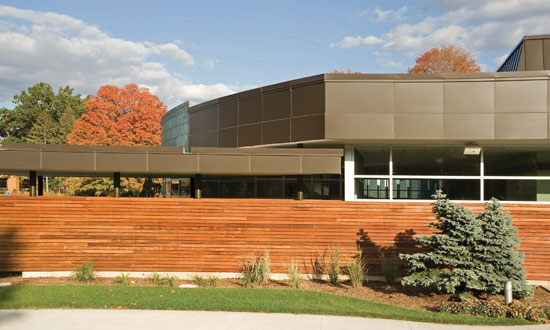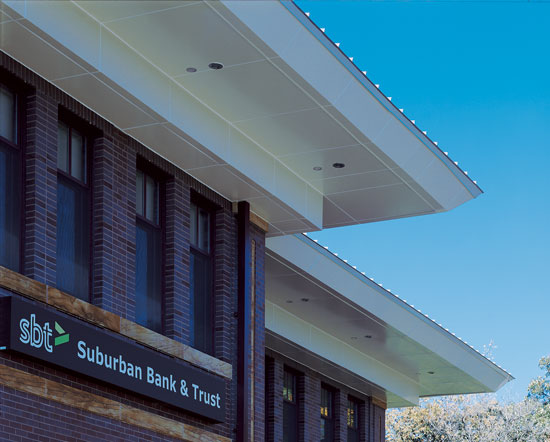Metal Exterior Walls
Design Applications
Historically, preformed or roll-formed metal wall panels were used almost exclusively on industrial plants and warehouses since they were viewed as a durable, reliable and affordable building skin option. However, they have been increasingly seen as a strong design element in recent times such that they are used on virtually every type of structure, from manufacturing facilities and stores to schools and office buildings.
New Buildings
The variety of appearances and profiles available for metal wall panels has made them a very popular choice for a number of new building types. Retail buildings benefit from the striking colors that can be customized and used in multiple store locations. K-12 schools that need durable and affordable materials benefit from a high quality, long lasting exterior skin that can be customized for a variety of communities and learning intentions. Commercial buildings such as offices, hospitality buildings, churches and others all find options and styles to suit differing needs. Higher education buildings that seek to make bold statements with their siding and convey a forward thinking design approach can use metal panels mixed with other materials to achieve this intent. Similarly, health care buildings that strive for a soothing combination of materials can achieve that look with preformed metal panels.

Horizontal metal wall panels in a metallic color are integrated with the rest of a building facade at Georgia State University.

Photos courtesy of Petersen Aluminum / PAC-CLAD
Composite panels blend with other natural materials and the surrounding area at the Pine Rest Postma Center.
Existing Buildings
A large and growing part of the use of metal wall panels is the renovation and rehabilitation of existing buildings. Building exteriors that are either worn or deteriorated or are in need of a new look due to use or ownership changes find an efficient and effective option in metal panels. In particular, recovering or resurfacing canopies, soffits, and fascia are common in many building types but schools and retail stores in particular. The use of these metal wall panels creates a new look and can completely rejuvenate a building while respecting construction budgets. In many cases, some of the existing façade material may be able to remain in place minimizing work and waste as long as the new panels can be securely and properly installed. While, in some cases metal panels are used to add insulation to an exterior wall, it is more common to see uninsulated panels in a selected type and profile being used as a new skin for improved appearance and weathering. In the case of special or unique façades that require custom installations, the flexibility of metal panel sizing and fabrication means that custom work can be readily accomplished and installed using traditional methods.

Photo courtesy of Petersen Aluminum / PAC-CLAD
Retrofit metal soffits and fascia using flush composite panels give an existing bank building a fresh new look and improve the weather-ability of the structure.









